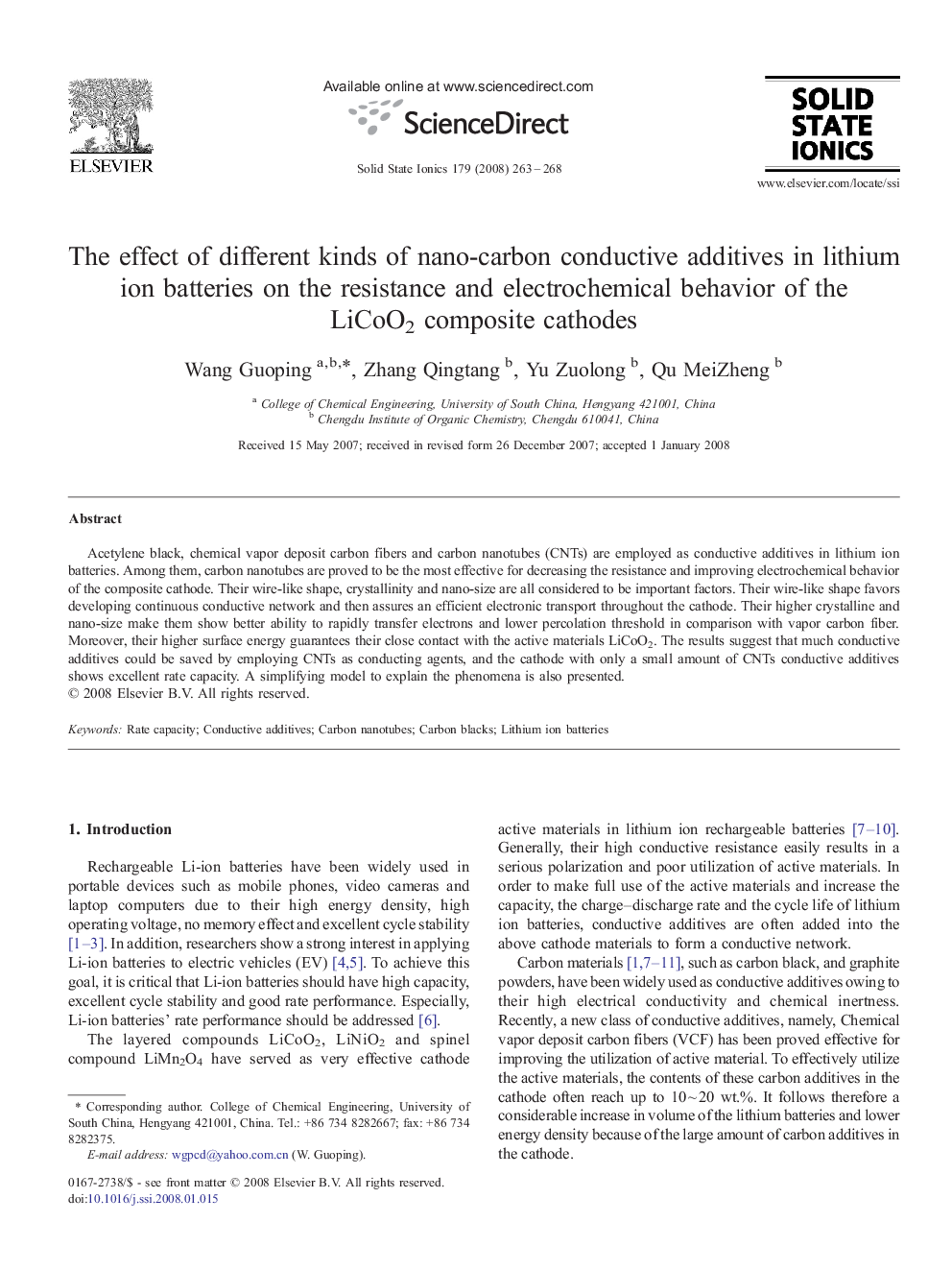| Article ID | Journal | Published Year | Pages | File Type |
|---|---|---|---|---|
| 1298083 | Solid State Ionics | 2008 | 6 Pages |
Acetylene black, chemical vapor deposit carbon fibers and carbon nanotubes (CNTs) are employed as conductive additives in lithium ion batteries. Among them, carbon nanotubes are proved to be the most effective for decreasing the resistance and improving electrochemical behavior of the composite cathode. Their wire-like shape, crystallinity and nano-size are all considered to be important factors. Their wire-like shape favors developing continuous conductive network and then assures an efficient electronic transport throughout the cathode. Their higher crystalline and nano-size make them show better ability to rapidly transfer electrons and lower percolation threshold in comparison with vapor carbon fiber. Moreover, their higher surface energy guarantees their close contact with the active materials LiCoO2. The results suggest that much conductive additives could be saved by employing CNTs as conducting agents, and the cathode with only a small amount of CNTs conductive additives shows excellent rate capacity. A simplifying model to explain the phenomena is also presented.
